
- Permbajtja
- prev
- next
- prev
- next
Rammed Earth is an earth based wall system made of compacted gravel, sand, and clay; that is extremely strong and durable. This technique is used for constructing foundations, floors and walls. It is an ancient method that has been revived recently as a sustainable building method. Traditional technology repeatedly rammed the end of a wooden pole into the earth mixture to compress it. Commonly used especially in China, the technique was applied to both ancient monuments and vernacular architecture, with the Great Wall utilizing the technique, Japanese temples, and the Alhambra palace and fortress.
Today, it’s used around the world in luxury homes, offices, shopping centers, places of worship, and more. In modern rammed earth 5-10 % cement is added as specified by an engineer. Also, rigid insulation is added inside the rammed earth wall for thermal resistance as well as steel re-bar for seismic reinforcement. Quality rammed earth walls are dense, solid, and stone-like with great environmental benefits and superior low maintenance characteristics.
Working with rammed earth requires a strong understanding of the climate and location in which the structure is to be built. Typically, the rammed earth technique works best in climates with high humidity and relatively moderate temperatures. In colder climates, rammed earth walls may need additional insulators, while in locations with high rainfall, they need additional protection against rain. The colour of rammed earth walls is determined by the earth and aggregate used. The ramming process proceeds layer by layer and can introduce the appearance of horizontal stratification to the walls, which can enhance the overall appearance. It can be controlled as a feature or eliminated.
Despite having been neglected as a construction technique for years, this type of construction is now experiencing a renaissance in architecture. Here is a selection of some buildings that have made the best out of this material:
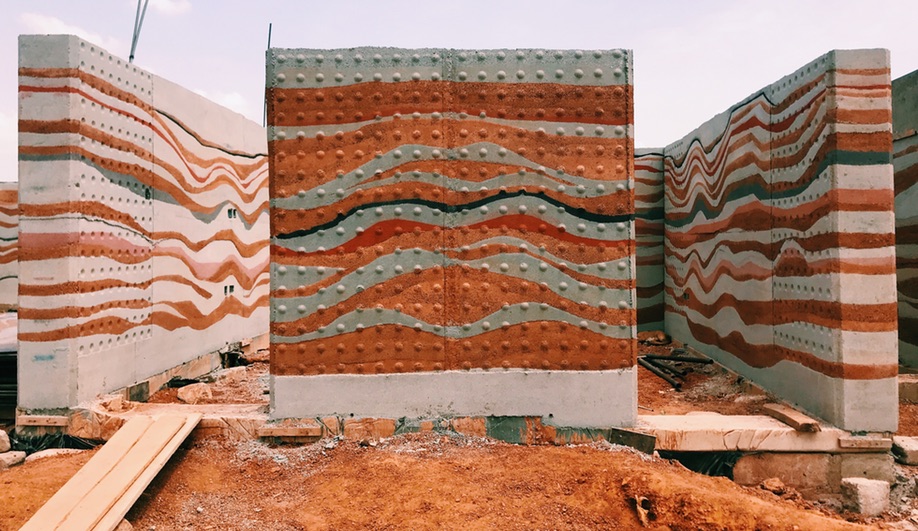
Hive Earth proposed rammed earth building to help relieve the housing crisis in Ghana.
Ricola Kräuterzentrum by Herzog & de Meuron
The new Kräuterzentrum (herb center) is situated like an erratic block in the midst of a landscape dotted with conventional industrial buildings. The Kräuterzentrum is built largely out of locally sourced earth; it is like a geometrical segment of landscape with its dimensions and archaic impact heightened by the radical choice of material. Energy and sustainability are not simply treated as technical auxiliaries; they are built into the architecture and essential features of the project as a whole. Earth as a material that regulates humidity has a positive, sustainable effect on the use of energy and overall climate control.
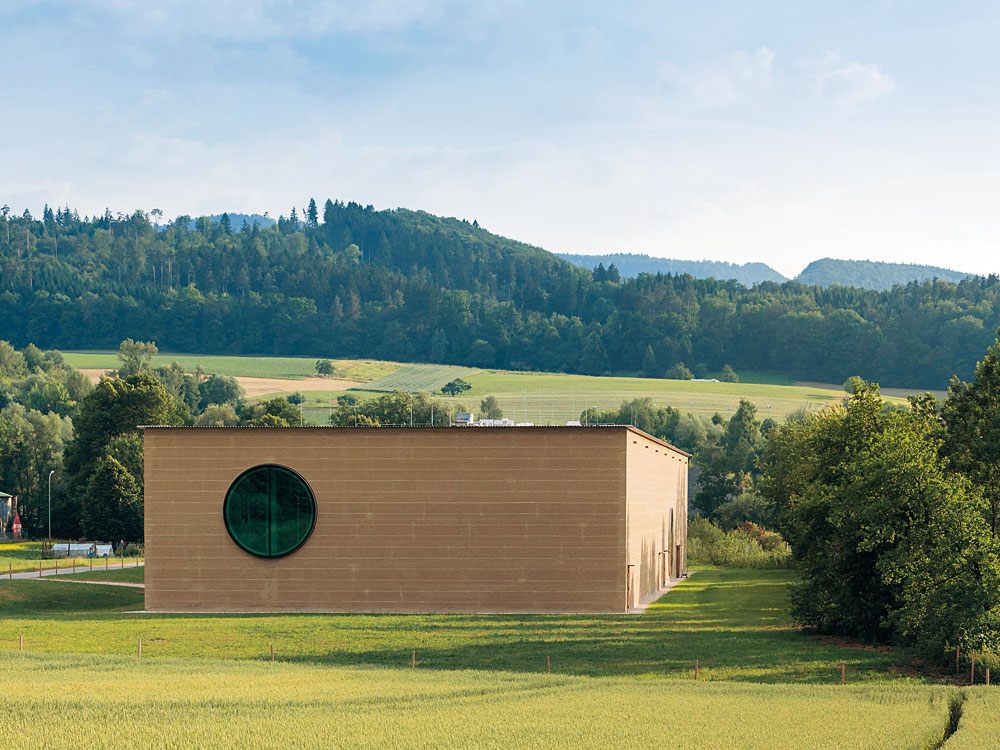
The Great Wall of WA by Luigi Rosselli
At 230 metres long, the longest rammed earth wall in Australia and - probably - the southern hemisphere, meanders along the edge of a sand dune and encloses twelve earth covered residences, created to provide short-term accommodation for a cattle station during mustering season. With their 450mm thick rammed earth facade and the sand dune to their rear and forming their roofs, the residences have the best thermal mass available, making them naturally cool in the subtropical climate. The rammed earth wall (construction) is composed of the iron rich, sandy clay that is a dominant feature of the site, gravel obtained from the adjacent river and (bonded with) water from the local bore (hole).

Sanbaopeng Art Museum by DL Atelier
This art museum is located on the outskirts of Jingdezhen, a city famed for its porcelain production, so architecture studio DL Atelier chose to use the local clay-heavy earth for its rammed-earth walls. The village already hosts a concentration of artists and exhibition spaces, so the studio set out to create a unique environment that uses architecture to evoke the intense relationship between the makers and the material. Designed to appear to emerge from the earth, the material introduce a textural detail to the building that the architects hoped "could offer a poetic feeling".
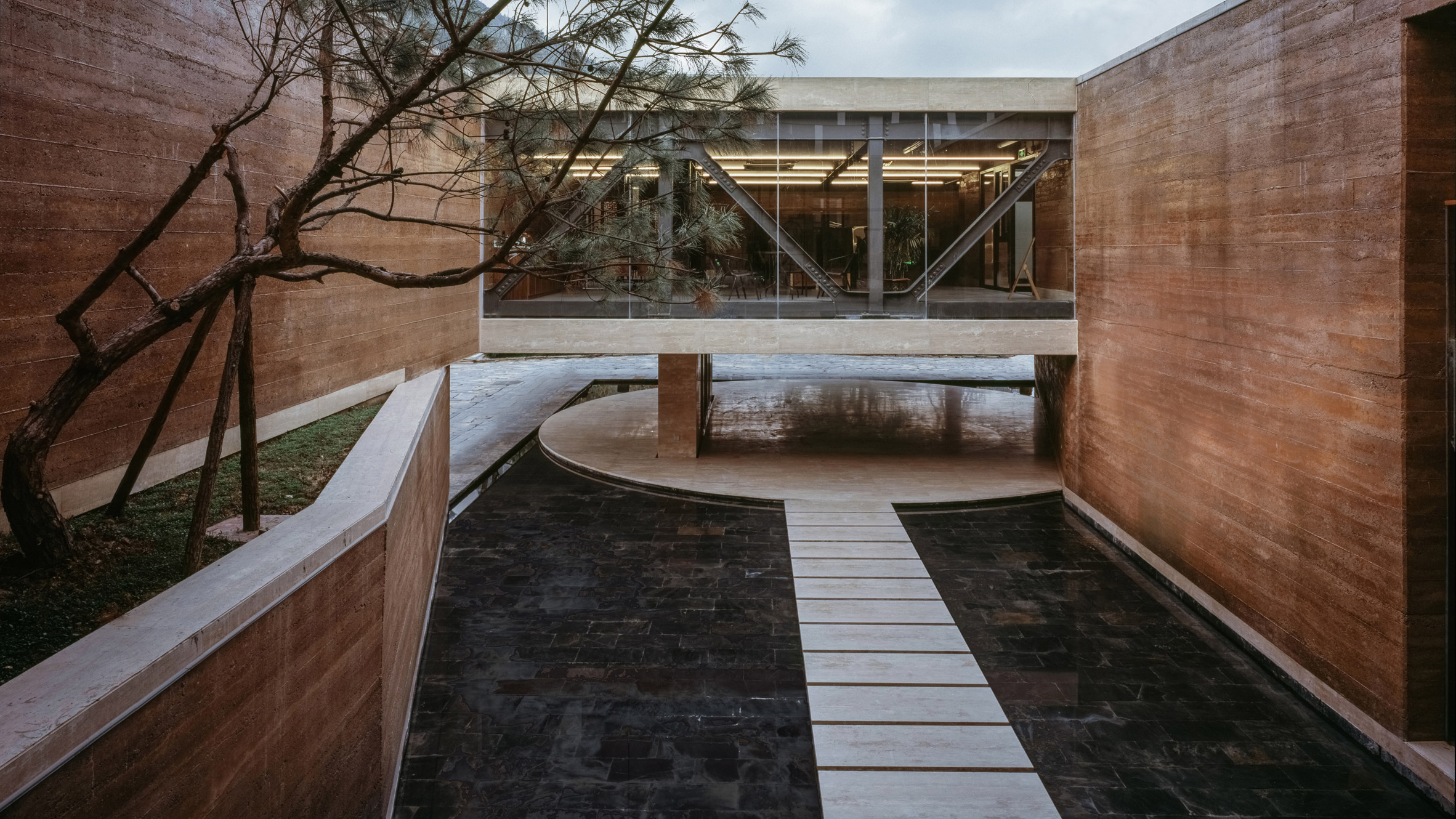
Casa Ballena by RIMA Design Group
Mexican architecture firm RIMA Design Group has connected several structures made from rammed earth with wood pergolas to form an arts centre in Los Cabos, Mexico. Casa Ballena was designed for a Mexican artist who wanted to create studios and residences for local and international artists. Each of the buildings is constructed with rammed-earth similar to the colour of the ground around the property. The local studio chose the material because it is capable of creating microclimates that differ from the conditions of its given environment and for its soundproofing ability.
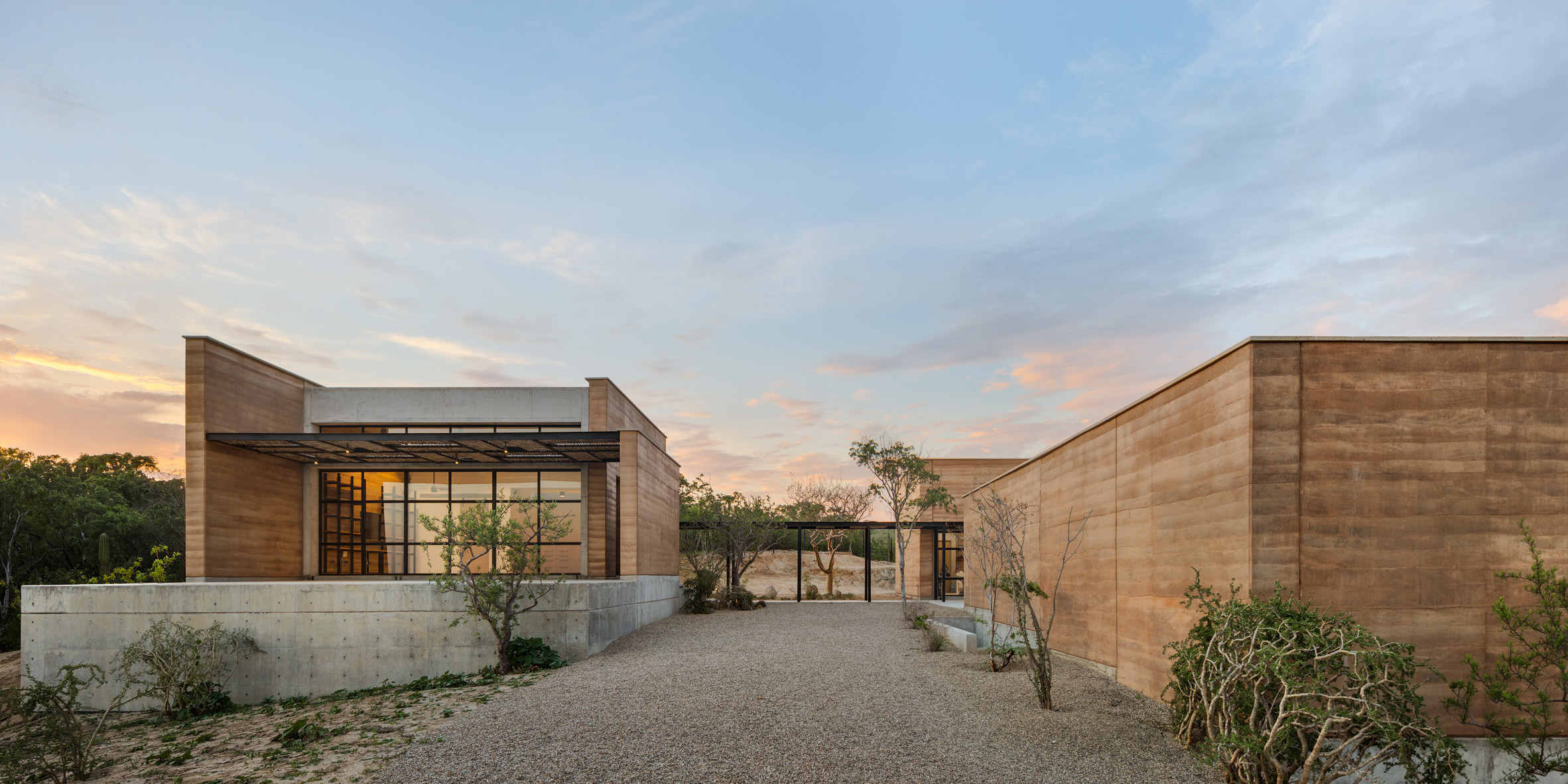
Landroom Observatory by Gitai Architects
Gitai Architects used rammed earth and stones from the nearby Mitzpe Ramon crater to build the Landroom observatory in Israel's Negev desert. Landroom is intended to function as a shelter from the sun in daytime and an observatory at night. The structure measures just six square metres and has space for only two people. It has no roof but is instead open to the desert air to give visitors a view of the night sky framed by its pressed-earth walls. The studio described Landroom as "a minimal environmental structure designed on the verge between territory and a landscape object."
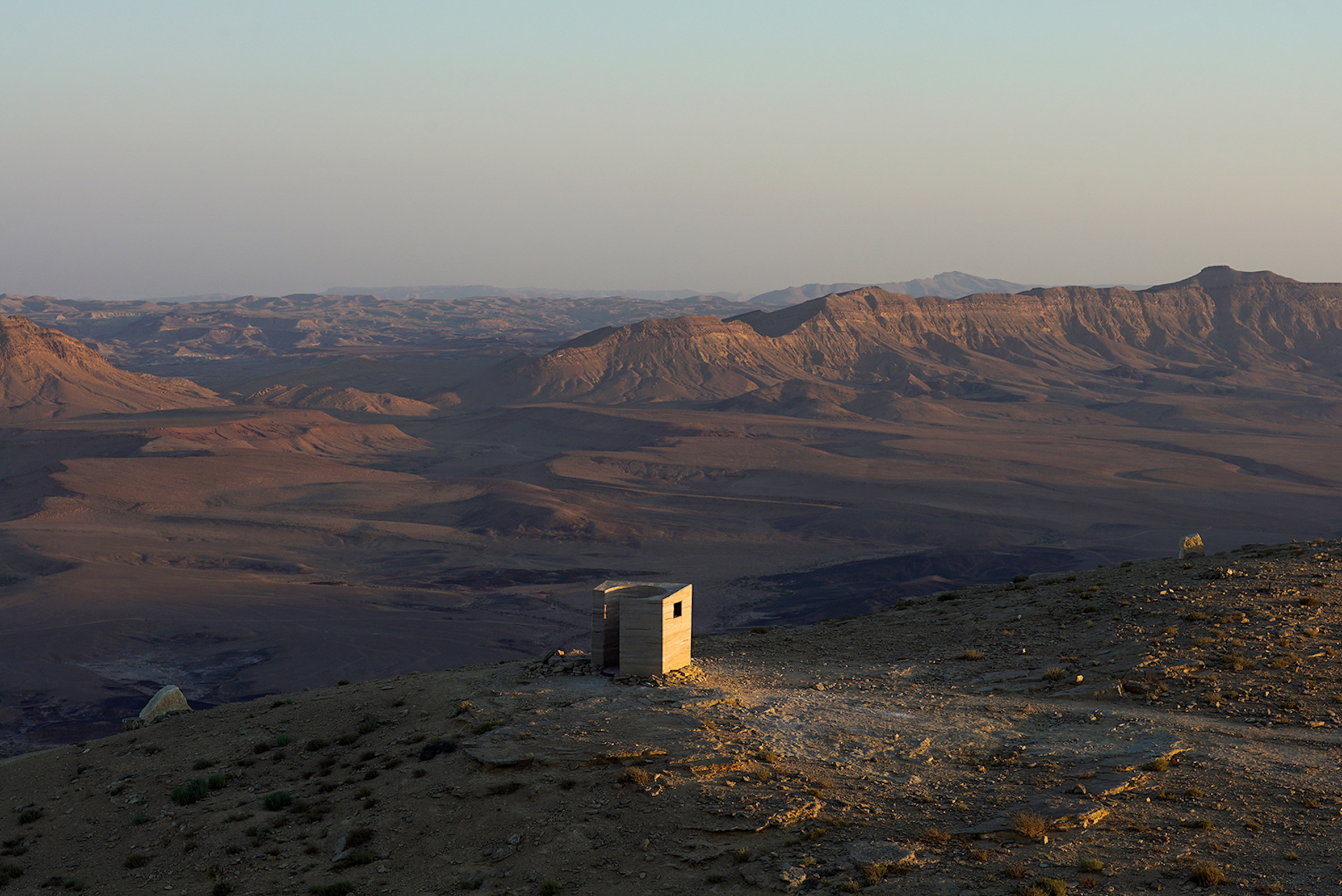
Nk’Mip Desert Cultural Centre by DIALOG
The Nk’Mip Desert Cultural Centre is designed to be a specific and sustainable response to the building’s unique context. It is situated on the edge of one of the most endangered ecosystems in Canada, the northernmost point of the Great American Desert. The mission of the Centre is to exhibit the Okanagan Desert and the culture of the Okanagan people, and to promote conservation efforts for desert wildlife. The design is both an homage to the traditional winter dwellings of the Okanagan peoples and a literal integration into the natural landscape with a contemporary architectural design. The desert landscape flows over the building’s green roof, held back by a rammed earth wall. The rammed earth wall is constructed of local soils, concrete, and colour additives. Its thickness and mass provide an insulating value that help to provide a more stable indoor temperature than the large temperature swings of the surrounding desert climate.

Los Terrenos by Tatiana Bilbao
The site of Los Terrenos is located in a residential highland forested zone adjacent to the southwest side of Monterrey. The housing program is fragmented according to each component’s function and role within the site, but they are all enclosed in a perfect square in the general plan. The landscape strategy aimed to respond and mimic the existing flora and fauna of the site in a designed aspect. The social area is on the rest level, within a mirrored glass envelope that simultaneously reflects and contains the lush surrounding; the main room overlooks the treetops; the other bedrooms are underground and built with clay and rammed earth in relation to the topography.
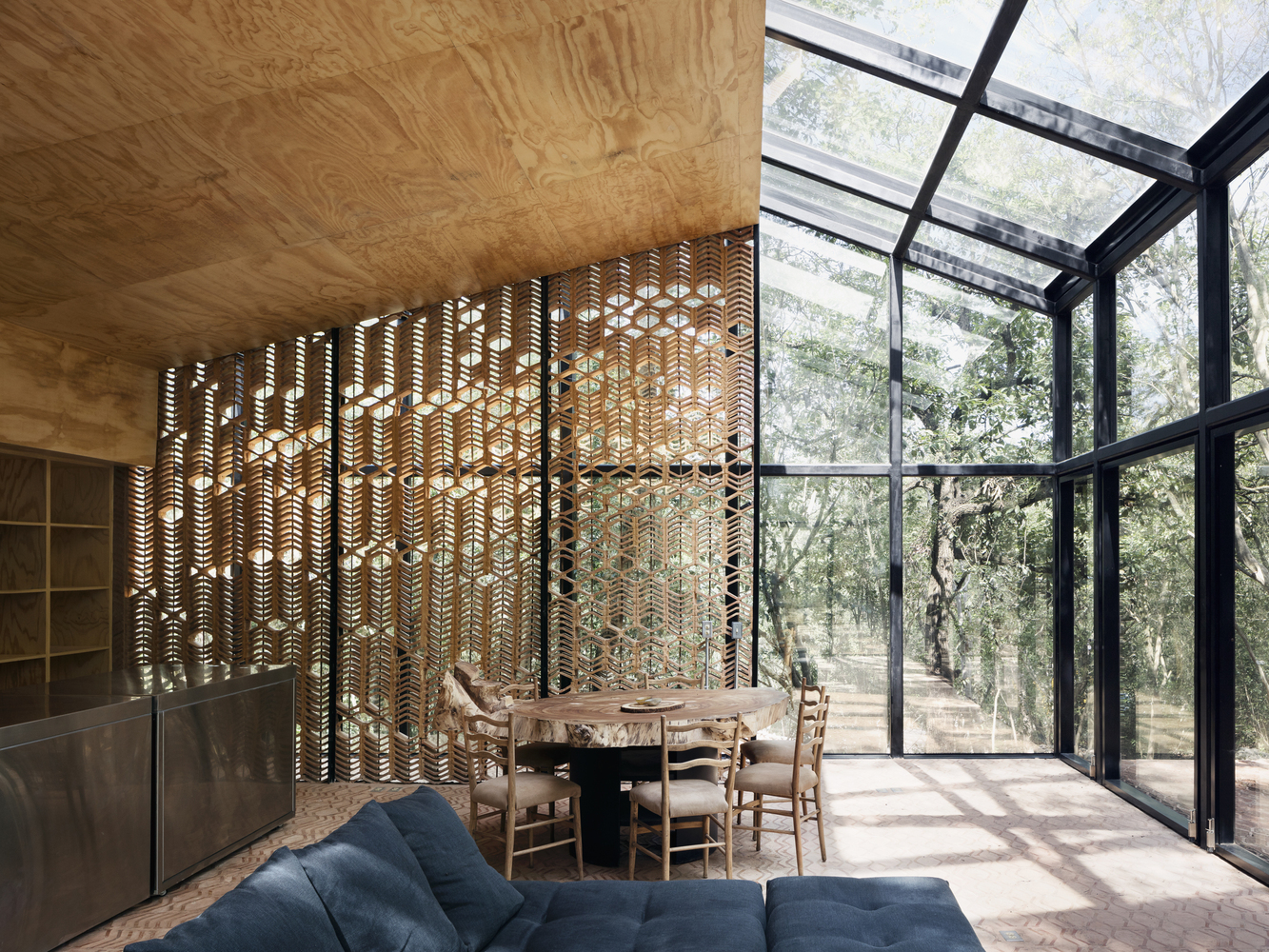
Source: Wikipedia; Dezeen; Archdaily